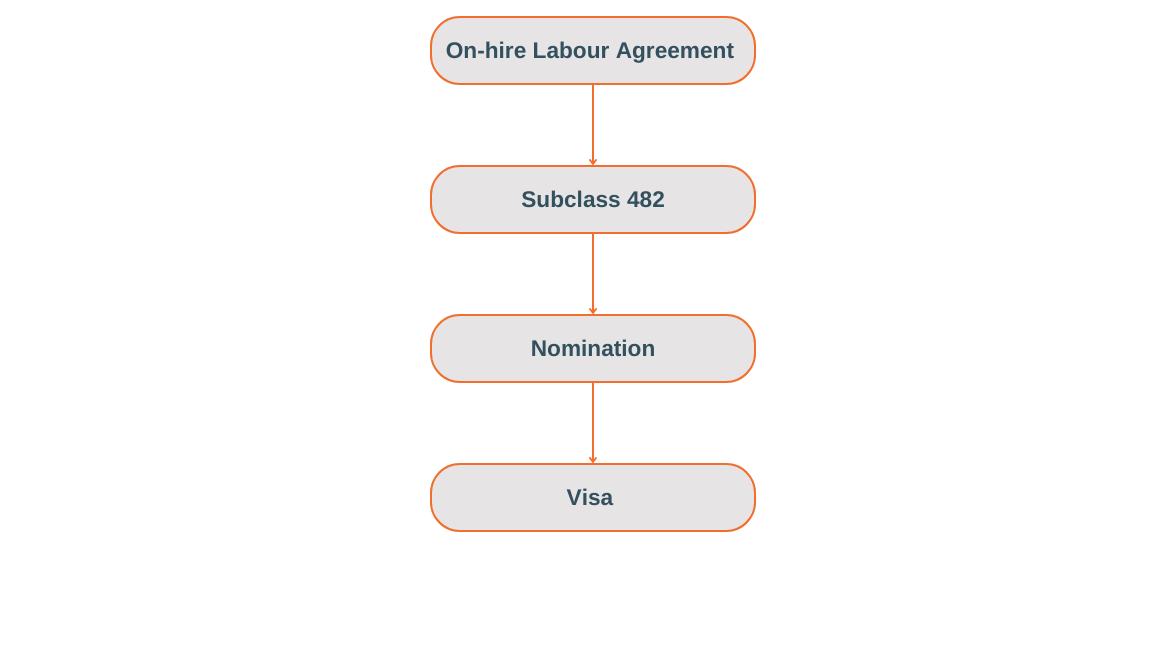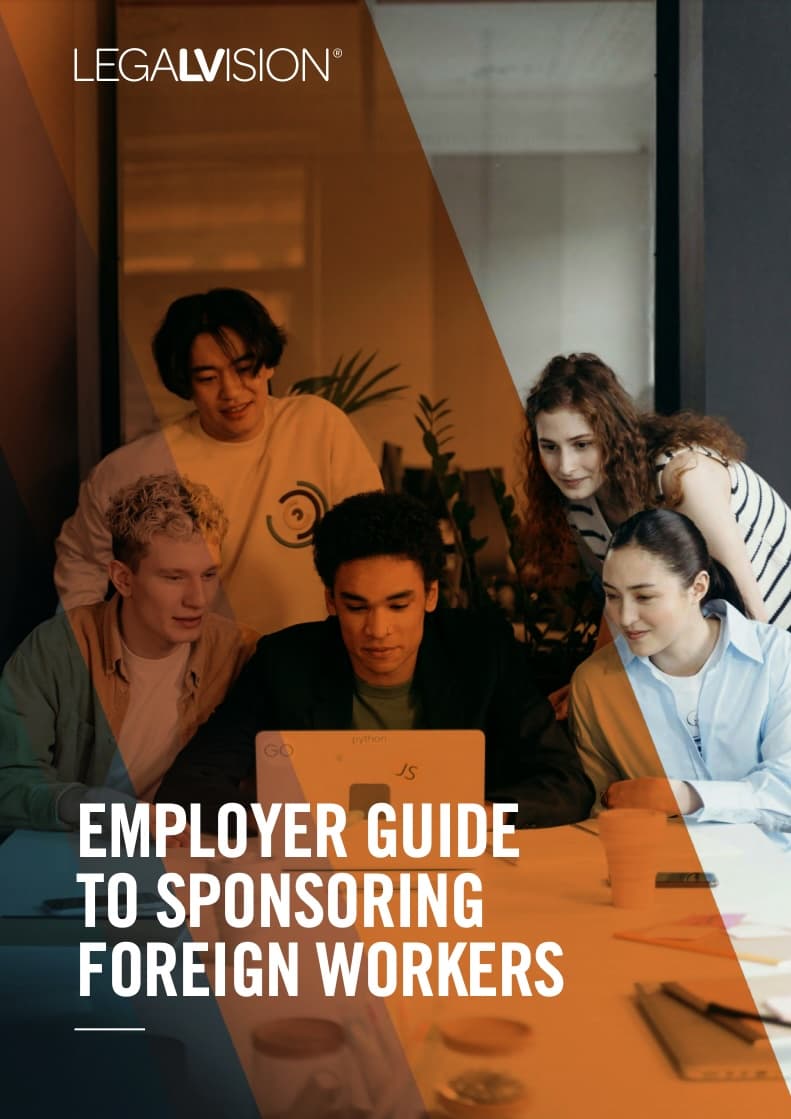A labour agreement (LA) is a formal contract between the Australian government and an Australian employer or organisation. It authorises your business to recruit and employ overseas workers in Australia. The LA program aims to provide a flexible solution for Australian businesses when standard skilled visa programs are inadequate, and you cannot find suitable workers locally. LAs typically last five years and often have additional terms and conditions. They are negotiated to balance concessions to standard requirements with extra provisions to manage risks effectively. This article will explain how you can request an OHLA.
What is an On-Hire Labour Agreement?
The On-Hire Labour Agreement (OHLA) is an industry-specific LA. It permits Australian businesses whose core activity is to provide on-hire services or labour to third parties and organisations the opportunity to sponsor migrant workers in eligible occupations. Sponsoring occurs under the Temporary Skill Shortage (TSS) (Subclass 482) visa program.
If you are an established recruitment agency or on-hire labour organisation, leveraging the OHLA represents a strategic imperative. It enables the:
- augmentation of service portfolios;
- fortification of client partnerships; and
- revenue generation.
Additionally, the OHLA allows you to navigate risks and ensure adherence to legal mandates adeptly.
Features of an On-Hire Labour Agreement
The OHLA permits the sponsorship of skilled workers in an eligible occupation on the list of eligible skilled occupations for the TSS (subclass 482) program. You can only utilise the TSS program and a standard nomination ceiling of 20 places per year will apply.
Under the OHLA, your business can on-hire overseas workers to unrelated third parties and organisations. However, you remain their employer rather than the third party.
In order for an overseas worker to qualify for this agreement, they must:
- be paid at least $65,000 and in accordance with the Temporary Skilled Migration Income Threshold (TSMIT) and the Australian Market Salary Rate (AMSR);
- work on a full-time basis of 38 hours per week; and
- satisfy skills and English language requirements.
Additionally, there are no permanent residence options available under the OHLA.
Continue reading this article below the formRequirements for Participation
Each OHLA request is assessed on a case-by-case basis. To qualify for the OHLA, your business must meet stringent criteria set forth by the Australian government, which include demonstrating that:
- you are an Australian business with good standing, meaning that you must be lawfully operating for a period of at least 12 months and not subject to any adverse information;
- there are no other appropriate employer-sponsored skilled programs that are suitable;
- genuine efforts to recruit from the domestic labour pool and showcasing a commitment to fair labour practices;
- outlining a compelling business case for hiring overseas workers and on-hiring them to unrelated entities or businesses;
- adhering to wage and employment conditions in line with Australian standards; and
- providing evidence of your financial capacity to support sponsored employees throughout their tenure.
The Process Unveiled
Navigating the intricacies of the OHLA entails a comprehensive process that is subject to ministerial discretion. Generally, the process is as follows:
- the Australian business or employer requests an OHLA;
- once the OHLA is approved with the relevant nomination ceiling and occupations, the Australian business or employer can submit a 482 nomination application where they demonstrate a genuine need for the position and satisfy specific requirements; and
- The overseas worker submits a 482 visa application and undergoes scrutiny to ensure their qualifications align with the nominated role. This culminates in the issuance of visas permitting entry into Australia for work purposes.

Strong Business Case Required
As a recruitment agency, your business case proposal should include a comprehensive set of information and evidence to support your request. The table below outlines some key inclusions.
| Information | Explanation |
|---|---|
| Overview of the Agency | Start with a brief introduction to your recruitment agency, highlighting its history, expertise, and track record in providing temporary staffing solutions. |
| Market Analysis | Provide an analysis of the current labour market, identifying specific sectors or industries experiencing skill shortages and where the agency operates. Include data and statistics to support your claim of shortages, such as vacancy rates, turnover rates, and projections for future demand. |
| Client Needs and Demand | Detail the staffing needs and demands of your agency’s clients, particularly focusing on sectors where shortages are acute. Include testimonials or case studies from clients that demonstrate the challenges they face in sourcing skilled workers locally. |
| Proposed Solution | Outline how obtaining an OHLA would address the identified skill shortages and meet the needs of your agency’s clients. Explain how the agreement would allow your agency to access overseas talent pools to fill vacant positions efficiently and effectively. |
| Compliance and Risk Management | Describe the agency’s approach to compliance with relevant immigration laws and regulations. Highlight any existing processes or systems in place to ensure compliance, such as visa application procedures, monitoring mechanisms, and training for staff involved in recruitment. |
| Financial Projections | Provide financial projections demonstrating the potential benefits of obtaining an OHLA. This could include estimated revenue growth resulting from expanded service offerings, cost savings compared to alternative recruitment methods, and the overall financial impact on your agency’s bottom line. |
| Legal and Regulatory Considerations | Address any legal or regulatory considerations associated with obtaining an OHLA, such as obligations related to visa sponsorship, workplace conditions for overseas workers, and reporting requirements to immigration authorities. |
| Supporting Documentation | Include any additional supporting documentation that strengthens your case. |

Sponsoring overseas workers as an Australian business is complicated. Let us simplify it for you with this free employer guide.
Key Takeaways
Australia’s On-Hire Labour Agreement emerges as a strategic instrument, addressing skill shortages while fostering economic prosperity and competitiveness. By facilitating the entry of skilled workers, the agreement meets the evolving business needs and contributes to Australia’s economic fabric. By embracing the opportunities presented by this arrangement, your business can harness the talents of individuals from around the globe, ushering in a new era of innovation, growth, and collaboration on Australian shores.
If you have any questions about labour agreements, our our experienced immigration lawyers can assist as part of our LegalVision membership. For a low monthly fee, you will have unlimited access to lawyers to answer your questions and draft and review your documents. Call us today on 1300 544 755 or visit our membership page.
We appreciate your feedback – your submission has been successfully received.











